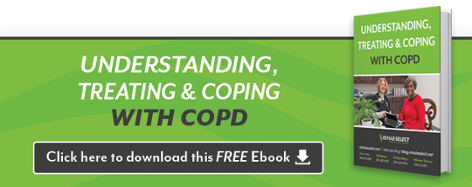 It is a challenge people living with COPD face; how to accommodate their disease without giving up the benefit of regular exercise. It might seem that exercise is impossible when you have chronic obstructive pulmonary disease, but really, the opposite is true, according to the American Lung Association. A sedentary lifestyle will only make breathing difficulties worse.
It is a challenge people living with COPD face; how to accommodate their disease without giving up the benefit of regular exercise. It might seem that exercise is impossible when you have chronic obstructive pulmonary disease, but really, the opposite is true, according to the American Lung Association. A sedentary lifestyle will only make breathing difficulties worse.
Exercise and COPD
When a person suffers from chronic bronchitis, emphysema or other lung diseases, exercise is taxing, but physical activity is part of basic pulmonary rehabilitation. Improving muscle mass and controlling weight helps reduce the strain on the respiratory system. The key to a successful exercise plan is preparedness and control.
- Talk to a doctor first. A health care professional will know what level of exercise is appropriate and have advice on fitness routines that work. The doctor will rule out any other medical conditions that might limit activity.
- Any person with COPD should keep emergency tools close by, for example, an inhaler or even portable oxygen, plus a phone or remote panic button.
- Start slow and build; let common sense be the guide. Pain and breathlessness are signs to stop. Tolerance levels will build over time.
Follow basic fitness rules by warming up and cooling down with each session. Set realistic goals and take off at least one day a week for a rest.
Stretching Exercises
Stretching is the slow lengthening of the muscles to improve tone and flexibility. Neck rolls while watching television, or toe touches, shoulder shrugs and calf stretches each morning all force oxygen to the muscles, helping them warm up.
Walking
Walking is one of the most beneficial and cost-effective exercises available. The goal of any cardiovascular exercise, such as walking, is to improve heart function and enhance the body’s ability to use oxygen. Beginners can start inside the house to build tolerance.
Walk around the room twice, two or three times a day. Increase the speed and the challenge by adding more rooms and stairs, if available.
Once able to successfully walk indoors, and with a physician’s approval, take the exercise outside. Doctors will sometimes ask COPD patients to stay away from potential allergens, so an indoor track or treadmill would be an appropriate substitute for walking outdoors.
Other cardiovascular exercises that benefit COPD patients include:
- Stationary biking
- Rowing
- Cross-country skiing
- Water aerobics
- Dancing
Individuals with COPD should always walk with a person aware of their condition or as part of a group. The “buddy”would be on hand to supply emergency assistance if needed.
Strength Training
The ideal fitness plan includes both cardiovascular workouts and strength training to build muscles. Training exercises using resistance bands is one approach to strengthening muscles without bulking up.
Going High Tech
Connecticut researchers found that using the home video game “Wii Fit” was beneficial for people with stable COPD. The initial data indicated that the study participants performed at up to 70 percent of maximum levels during five-minute exercise routines using interactive training devices. That includes up to 86 percent for oxygen consumption. Using the Wii is a fun way to encourage COPD patients to get moving at home, according to the American Thoracic Society.
Breathing Technique During Exercise
COPD patients use pursed lip breathing to maintain adequate oxygen levels during exercise and prevent shortness of breath. Pursed lip breathing is a little like smelling a flower before blowing out candles. Air goes in through the nose and exhales through pursed or puckered lips. Attempt to inhale for two seconds and exhale for four. Slowing down breathing will increase oxygen flow through the entire system and prevent the exerciser from becoming air hungry.
Exercise sessions may only be five minutes at first, but over time, patients should aim for 20 to 30 minutes of activity, three or four times a week. COPD is not an excuse to sit around. If anything, it is a wake-up call to get moving, but to exercise smart.





